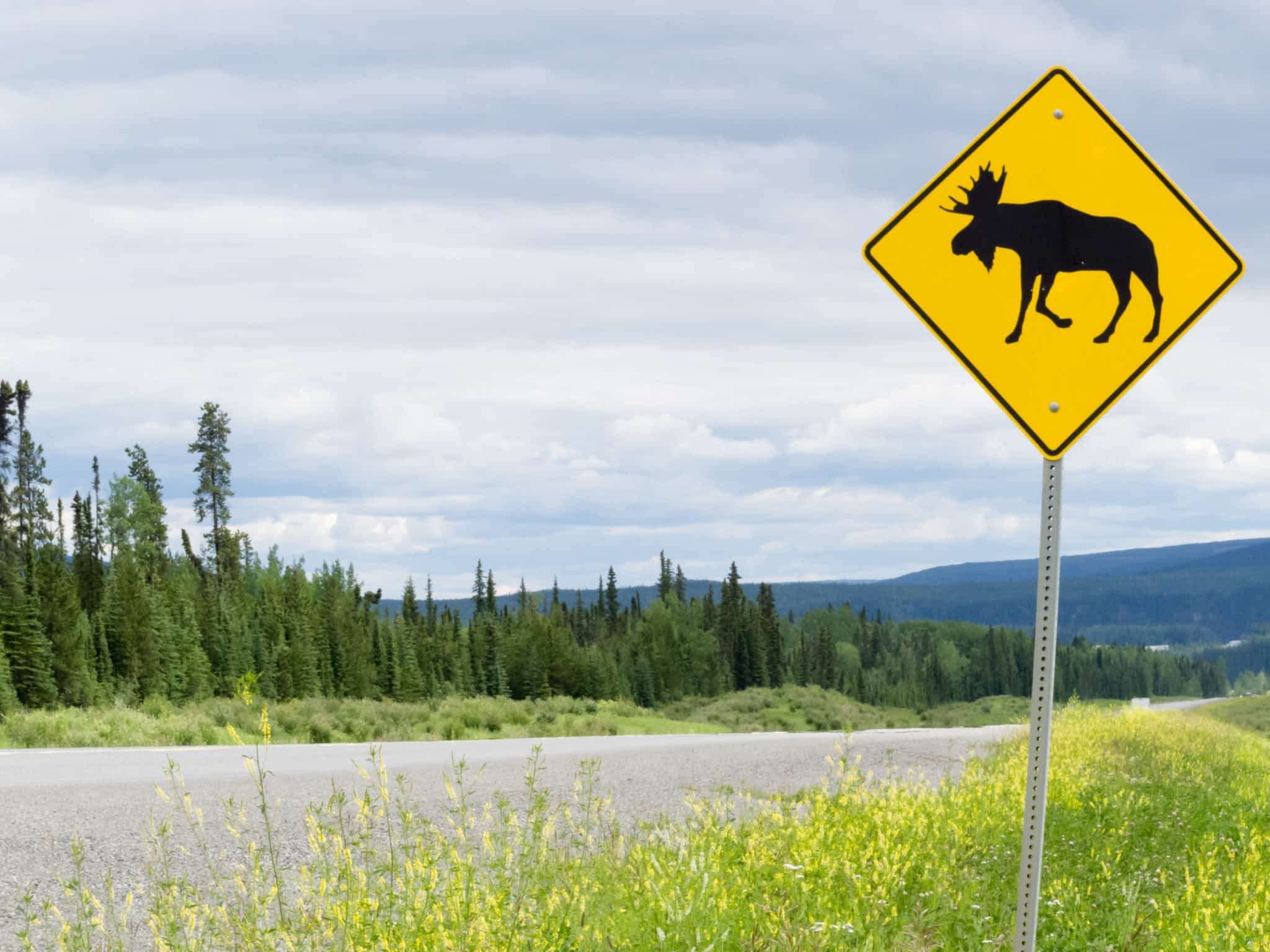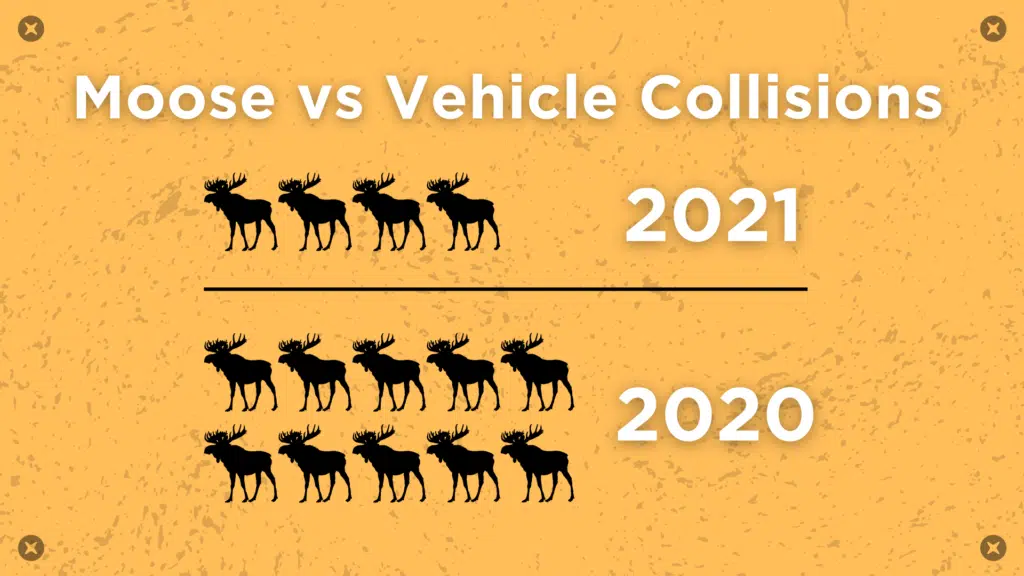
This weekend while driving through Terra Nova National Park, I noticed a sign that stood out to me. It wasn’t for the next rest stop or the exit for our turn-off, rather it was a good news statistic: moose vs vehicle accidents in the park are on the decline.
Just outside the exit for Traytown stood a sign in bright, attention-grabbing yellow showing the number of moose vs vehicle collisions for 2020 and 2021. With 10 in 2020 and 4 in 2021, that’s a 60% drop – good news for Newfoundlanders & Labradradorians, and tourists alike.
Collisions on the Decline
In a call to park officials this week, they couldn’t confirm numbers so far for 2022 however a report by CBC last summer shows that moose accidents are on the decline across the whole province.
The number of collisions in Newfoundland & Labrador is decreasing year over year, from 609 in 2012 to 435 in 2019, a difference of around 28%. Altogether, there were 20% fewer auto accidents throughout that time. During that period, crashes involving moose and vehicles accounted for around 6% of all vehicle collisions, with an annual average of one fatality.
Per CBC, on the island of Newfoundland, according to the government, there are roughly 117,000 moose. This equates to roughly 1 moose per square kilometer, which is about the size of an 18-hole golf course. With 0.41 moose per square kilometer, New Brunswick comes in second place with the highest moose density in the nation.
Moose vs Vehicle Accident Occurences
Despite the fact that incidents are reported all year round, more than 70% happen between May and October. June, July, and August rank as the three most important months.

Courtesy: Newfoundland & Labrador Fisheries, Forestry and Agriculture
Most accidents take place between nightfall and sunrise. Moose are most active at this time, and driver visibility is significantly hindered by the darkness. The majority of accidents happen at night. So when you’re driving, keep moose in mind to prevent accidents.
The majority of the province’s highway network passes through favorable moose habitats. So, while driving on any portion of the Trans Canada Highway (TCH) or on any secondary roads, a driver might anticipate coming across moose.
Moose Accident Prevention Tips
As long as there are moose in Newfoundland & Labrador there will always be the risk of moose vs vehicle accidents. While whistles and reflectors have been tested, they are not proven to work. The only way to prevent an accident, short of keeping the car parked in the driveway, is to stay vigilant. Before hitting the road across our beautiful province, follow these excellent tips from the Newfoundland & Labrador Department of Fisheries, Forestry, and Agriculture:
- Slow down when driving at night. This will allow you more time to respond to a moose on or near the highway.
- Pay attention to Warning Signs; they mark High-Risk areas. These signs were placed along the roadways for you! Slow down and watch for moose.
- Scan both sides of the road ahead as far as possible, especially when you are in a posted High-Risk accident zone. The best way to avoid an accident is to spot the moose well in advance. Drivers report that in most accidents they did not see the moose until immediately before impact. Moose on the right side of the vehicle is avoided more often than those on the left because drivers concentrate more on the right. Therefore, it is important to scan both sides of the road.
- Use extreme caution whenever you see an animal. No matter what it appears to be doing or how far it is from the road, slow down.
- Moose are unpredictable. The moose you see standing calmly at the edge of the road could bolt in front of your vehicle at the last moment.
- Don’t let yourself be distracted. A driver who is alone and concentrating on the road is less likely to strike a moose, than is a driver whose attention wanders while talking to a passenger.
- Remember most accidents occur on clear nights and on straight road sections, maybe because drivers are more cautious on curves or in poor weather.
- Keep your windshield and headlights clean.
- Drive with your headlights on high beam unless approaching, or overtaking, other traffic.
- Wear your seat belts. Seat belts save lives.
If you do spot a moose, please call the Moose Sightings Hotline provided by SOPAC NL: 1-855-89-MOOSE
Expert Advice from Wedgwood Insurance
From top-notch auto insurance to the most complicated commercial coverage, there’s more to insurance than the price of the policy and Wedgwood goes above and beyond for our clients with expert advice you can trust. But don’t take our word for it – there’s a reason we’re Newfoundland & Labrador’s most trusted insurance broker.
With over 220 Google My Business reviews, come experience the Wedgwood difference with expert advice from our dedicated team. We work to ensure that every client has the coverage that best suits their needs through upfront complimentary consultations and midterm reviews.







